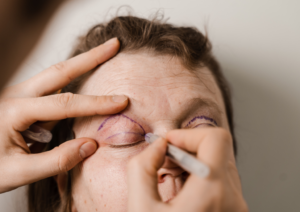
Plastic Surgery: Types, Benefits, Risks, and What to Expect in 2025
What is Plastic Surgery?
Plastic Surgery is a specialised area of medicine focused on restoring form and function or enhancing physical appearance through surgical procedures. This can involve procedures that correct physical defects, enhance certain body parts, or help restore function after trauma or surgery. Plastic surgery can be broadly divided into two main categories: reconstructive and cosmetic surgery.
- Reconstructive surgery aims to restore the form and function of body parts that have been affected by congenital conditions, trauma, or medical procedures. This could include surgeries for breast reconstruction after mastectomies or repairing damaged tissue after accidents.
- Cosmetic surgery, on the other hand, focuses on enhancing a person’s appearance to achieve desired aesthetic goals. This can include procedures such as a facelift or breast augmentation.
Plastic surgery is a highly specialised field requiring experienced professionals to ensure the desired outcomes for patients.
Types of Plastic Surgery
Plastic Surgery includes a wide range of procedures tailored to meet both medical and cosmetic needs. Here are some of the most common types:
- Breast Surgery: This includes procedures like breast augmentation, breast reduction, and breast lifts. These surgeries are designed to improve both the appearance and function of the breasts.
- Body Contouring: Procedures such as tummy tucks, body lifts, and arm/thigh reduction help reshape the body by removing excess skin or fat. These surgeries are especially popular among patients who have experienced significant weight loss.
- Facial Surgery: These surgeries include facelifts, eyelid surgery (blepharoplasty), and neck lifts, helping to reduce signs of ageing and enhance facial features.
- Post-Weight Loss Surgery: Excess skin removal after weight loss is crucial for improving comfort and body appearance. Many people opt for body contouring procedures post-weight loss to remove sagging skin and improve their overall physique.
Key Trends in Plastic Surgery You Should Know
Plastic surgery continues to evolve with new techniques and innovations. Some key trends in the industry include;
- Customised Treatments: Many surgeons now offer tailored procedures based on the patient’s unique anatomy and aesthetic goals, ensuring more personalised care.
- Body Positive Movement: There’s a growing trend towards embracing body diversity and individuality. Patients are more focused on achieving natural, well-balanced outcomes rather than pursuing “idealised” beauty standards.
- Technological Advancements: The introduction of advanced technologies, like 3D imaging, allows for more precise planning and better results in plastic surgery.
Risk and Benefits of Plastic Surgery
Like any medical procedure, plastic surgery has both benefits and risks. Understanding these can help you make informed decisions.
Benefits:
- Enhanced Appearance: Many people undergo plastic surgery to improve their physical appearance, whether it’s to enhance facial features or reshape the body.
- Boosted Confidence: Cosmetic procedures can lead to improved self-esteem and body image, which can enhance one’s overall self-confidence in life.
- Restored Functionality: For reconstructive surgery, such as post-trauma repair or breast reconstruction, plastic surgery can restore lost functionality or correct congenital defects.
Risks:
- Surgical Risks: As with any surgery, there’s a risk of complications such as infection, bleeding, or adverse reactions to anaesthesia.
- Scarring: Even with the most advanced techniques, all surgeries leave some degree of scarring, though the severity varies.
- Unrealistic Expectations: Sometimes, the results may not meet a patient’s expectations. It’s important to have realistic goals and discuss potential outcomes thoroughly with your surgeon.
How to Choose a Plastic Surgery Clinic?
Choosing the right clinic for your plastic surgery is a crucial decision. Here’s how to make the best choice:
- Research the Surgeon’s Credentials: Make sure your surgeon is registered with the Medical Board of Australia and is a Fellow of the Royal Australasian College of Surgeons (FRACS) in the Plastic Surgery specialty.
- Consider the Clinic’s Facilities: Ensure the clinic is equipped with modern facilities, including an accredited surgical unit. This guarantees that your surgery is performed in a safe and controlled environment.
- Consultation Process: Choose a clinic where the consultation process is thorough and your concerns are addressed. A good surgeon will take the time to explain procedures, recovery times, and risks clearly.
What to Expect Before and After Plastic Surgery
Undergoing plastic surgery is a significant decision, and understanding what to expect during the process can help ease any concerns. Here’s a look at what you can anticipate before and after your procedure.
Before Surgery:
- Consultation: Expect a detailed consultation where your surgeon will assess your health, goals, and the best approach for your procedure.
- Pre-Surgery Instructions: You may be asked to follow specific instructions, such as avoiding certain medications or fasting before surgery.
- Mental Preparation: Be sure you’re mentally prepared for the changes and recovery process. Having realistic expectations is key.
After Surgery:
- Recovery: Each procedure has its own recovery timeline. For example, a tummy tuck may require several weeks of recovery, while facial surgeries might have a shorter downtime.
- Post-Op Care: Follow-up visits are important to track your healing progress. Your surgeon will give you detailed instructions to ensure optimal results.
- Results: It can take several months to see the final results, as your scars fade and swelling and bruising subside.
Plastic surgery can offer significant benefits, from enhancing physical appearance to restoring functionality after medical procedures. With the right surgeon and clinic, you can achieve results that boost your confidence and improve your quality of life. It’s important to understand both the benefits and risks involved and to choose a reputable clinic that prioritises your safety and satisfaction.
Frequently Asked Questions
What types of plastic surgery are available in Australia?
In Australia, common types of plastic surgery include breast surgery (augmentation, reduction, lift), body contouring (tummy tucks, body lifts), facial surgery (facelifts, eyelid surgery), and post-weight loss surgery (excess skin removal).
What are some general considerations or risks with plastic surgery?
How do people decide which plastic surgery procedure is right for them?
Choosing the right procedure involves discussing your goals with a qualified surgeon. The surgeon will assess your needs, recommend appropriate procedures, and help you set realistic expectations.
What does recovery typically involve after plastic surgery?
Our Surgeons
Recent Post

The Difference Between Upper and Lower Blepharoplasty: Which Is Right for You

Plastic Surgery: Types, Benefits, Risks, and What to Expect in 2025

Understanding the Different Types of Tummy Tucks

What to Know about Neck Tightening Surgery











